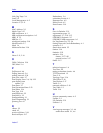
SEHI100TX MIB Structure
A-2 SEHI100TX MIB Structure
information in the other components, even if those components have different
community names; the Chassis MGR community names are the same as those
assigned via Local Management.
SEHI100TX LIM
The SEHI100TX LIM, or Local Management, component contains the objects that
provide out-of-band management via the Console port on the SEHI100TXÕs front
panel. No objects from this component are used for remote management.
Repeater One
The Repeater MIB component controls all repeater functionality on the
SEHI100TX. These functions include port count, port enable/disable, port status,
board number, repeater statistics (packets, bytes, collisions, errors, etc.), protocol
counts, and frame sizes; also included are the alarm, redundancy, source
addressing, and trap functions. Note that the default community names for the
Repeater MIB component will always be different from the default names
assigned to all the other components.
SEHI100TX Host Services
The Host Services MIB component contains the objects that provide the
SEHI100TX with its IP functionality Ñ essentially, those functions which allow
the SEHI100TX to operate over a network Ñ including functions such as ping,
Telnet, and TFTP.
SEHI100TX IP Services
The IP Services MIB component is not currently used by the SEHI100-TX, but is
reserved for future use.
A Brief Word About MIB Components and Community Names
In the original version of the component MIB architecture, each MIB component is
protected by its own set of user-conÞgurable Read-Only, Read/Write, and Super-
User community names. These names determine the level of access that will be
granted to the information controlled by each individual component. For these
devices, the central point of access for remote management is provided by the
Chassis MGR MIB component Ñ that is, if you deÞne your device icon or launch
a management application using the read-only, read/write, or super-user
community name assigned to the Chassis MGR MIB component, your SPMA
application is granted the appropriate level of access (read-only, read/write, or
super-user) to all of that deviceÕs MIB information Ñ even if the other MIB
components have different community names (as will occur of necessity if the
SEHI100TX has multiple Repeater MIB components, each of which must have a
unique set of community names).


















